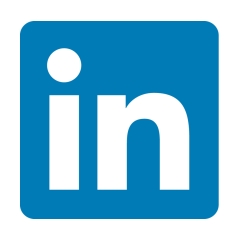| Saint-Louis University - Bruxelles | |||||||||||||||||
|
|||||||||||||||||
|
|
|||||||||||||||||
|
POLS1113 - Media institutions analysis
Credits :
5
Lecturer :
Teaching assistant :
Mode of delivery :
Face-to-face , second term, 30 hours of theory.
Timetable :
Second term
Thursday from 10:45 to 12:45 at 43 Botanique 1 Language of instruction :
French
Learning outcomes :
The EU “Analyse des institutions médiatiques” general aims are to familiarize students with the media world while developing their critical analysis skills of the media environment.
The EU targets particularly the following objectives: 1. provide to students a set of conceptual tools and factual information to understand and analyze the media institutions (Belgian, European, world), including their digital developments; 2. familiarize students with the social , economic, political and technological logics of media world, including major players of the Internet; 3. encourage students to follow the news in depth through a regular reading of the press, develop their comprehension and synthesis skills of current information. Prerequisites :
None
Co-requisites :
None
Course contents :
The EU deals with the following topics:
- global and European media groups, their shareholdings, their constitutive logics (diversification, concentration, financialisation, internationalization), the social, cultural and political implications of these different logics (for example in terms of regulation or pluralism of information) ; - the actors of the Internet (Facebook, Google ...) and new content distribution platforms (eg Netflix), their business models (in connection with the technical choices), implications for consumers (for example, the question the collection of personal data); - the media supply in Belgium: groups and titles of the written press, publishers, services and distributors of radio-television (public, private, local ...), the new actors of the information, the digital presence of the Belgian media; - the economic specificities of the "media" good, the media costs and revenues, the press aids, the economic models of "free", the economy of attention; - the advertising industry: actors (advertisers, agencies, boards ...), audience studies (audimetry, CIM ...), advertising on the internet and social media, the influence of advertising on the logic of production, distribution and programming; - media regulation: self-regulation, regulatory authorities (CSA), regulation by the public, the issue of social responsibility of media (eg Council of journalistic ethics.) - Knowledge and follow-up of social, political, economic, cultural and media news, through current tests and a press review exercise. Planned learning activities and teaching methods :
Description of the lecture:
Presentation with visual support. Description of active learning activity: The active learning activity concerns a particular aspect of the EU: the knowledge and monitoring of the news, through news tests and a press review exercise. Description of the lecture: Presentation with visual support. Description of active learning activity: The active learning activity concerns a particular aspect of the EU: the knowledge and monitoring of the news, through news tests and a press review exercise. 1 / Tests of knowledge of the news. On two occasions, students will take part in a news test to assess their knowledge of social, political, economic, cultural and media news. Depending on the case, the test will include multiple choice or true / false, short or dispatches in holes, "who's Who ", questions like" who says / does what ", photos to recognize. The guidelines and" best practices "in monitoring and critical analysis of the news will be approached during sessions upstream. 2 / A press review. The students, divided into groups of three, draw a topic (eg immigration, health or environmental policies, the Israeli-Palestinian conflict, the Islamic state, pension reform, the tax - shift, etc.) that they will have to follow for one month in order to produce a written press review. Students will work to synthesize, contextualize, reconstruct a diachronic process, use a variety of sources, introduce critical aspects, and so on. The instructions of the work and the "good practices" of writing a press review will be the subject of upstream face-to-face sessions. Assessment methods and criteria :
The evaluation has three components:
- a written exam on the subject covered in the lectures - news tests (2) - Press review The weighting of each component in the final grade must be specified by the professor. Recommended or required reading :
- Frédéric ANTOINE et François HEINDERYCKX (2011), État des lieux des médias d'information en Belgique francophone, Bruxelles, Parlement de la communauté Française de Belgique Wallonie-Bruxelles.
- Jean-Marie CHARON (2009), Stratégies pluri-médias des groupes de presse, in : Les Cahiers du journalisme, n°20, (« L'économie du journalisme »), automne, p. 54-74. - Michel GASSEE (2005), L'aide directe à la presse en Communauté française (1973-2005), in : Courrier hebdomadaire du CRISP, n° 1873, p. 1-47. - Patrick LE FLOCH et Nathalie SONNAC (2005), Économie de la presse, Paris, coll. « Repères », ed. La Découverte. - Michel MATHIEN (2003), Économie générale des médias, Paris, coll. « Infocom », Ellipses Marketing. - Franck REBILLARD et Nikos SMYRNAIOS (2010), Les infomédiaires, au cœur de la filière de l'information en ligne, in : Réseaux, n° 160-161, p. 163-194. - Nadine TOUSSAINT-DESMOULINS (2011), L'économie des médias, Paris, coll. « Que sais-je ? », Presses universitaires de France, 8e édition. |
||||||||||||||||






